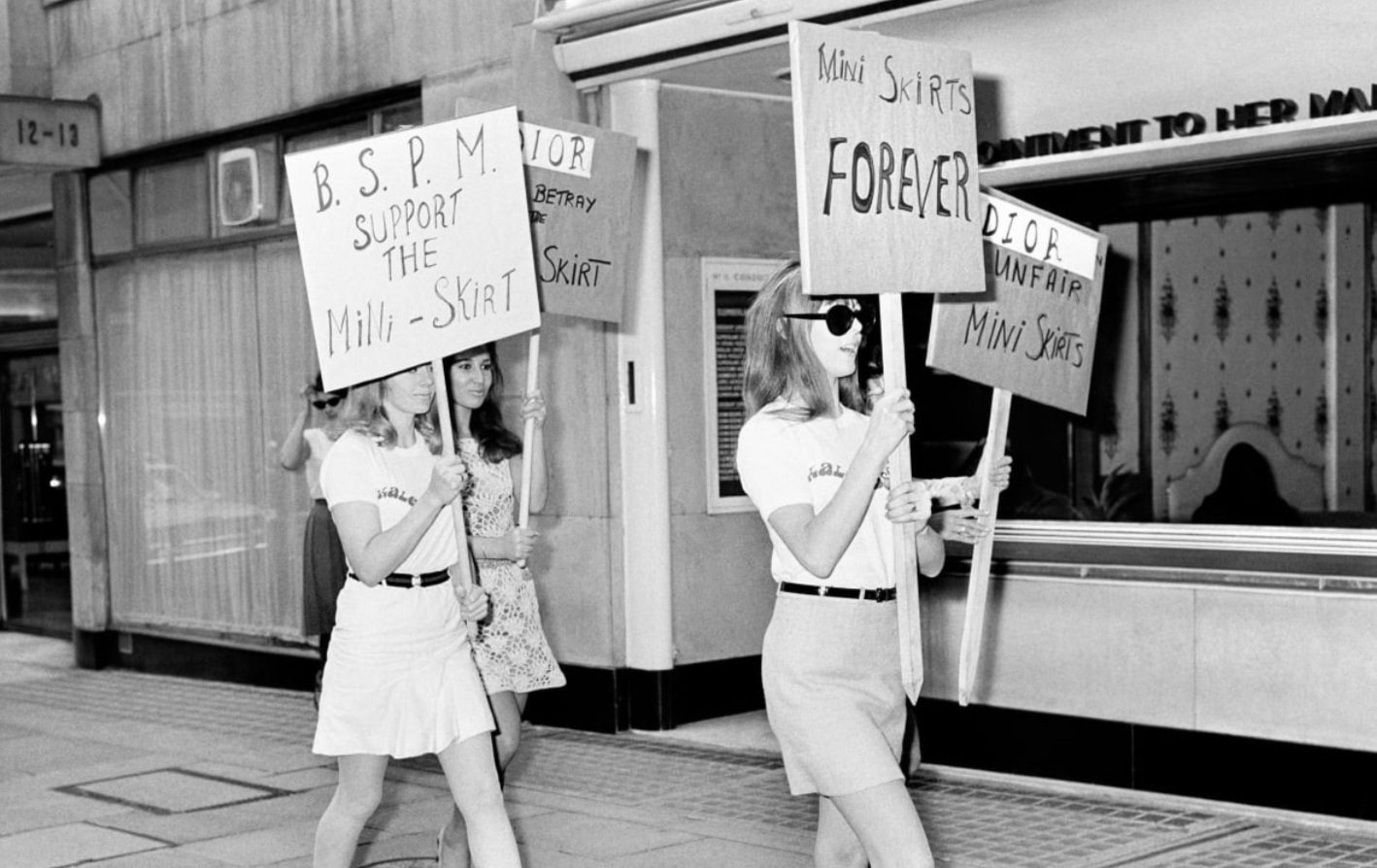How Mary Quant Popularized A Symbol of the 60s Feminist Movement
Designer Mary Quant Cover Photo: Photo: Evening Standard via The Guardian
Mary Quant was a popular fashion designer during Britain's “Swinging Sixties” Era of Fashion. She created colorful clothing with cool geometric and polka dot patterns. She is best known for popularizing the iconic mini skirt for women. At the time, the mini skirt became a symbol of the beginning of the second wave feminist movement. It was a symbol of rebellion for women and allowed them to gain autonomy over their fashion like never before. The mini skirt was daring and gained popularity because it was so youthful and different compared to the other women’s garments offered at the time.
Photo: Dion Lee via: Style Caster
In the 60s, youth culture and fashion shaped trends. Young feminists wanted to be different and be more upfront about their beliefs. They often were the first to popularize trends within the movement that were different or out of the box. In general, younger people were wearing things that were anti-establishment and subversive of sexuality and gender roles. They wore things that represented working-class culture and the rejection of high-class society. Additionally, young British models such as Twiggy were icons or key figures of teens in London and were often looked to for fashion inspiration. The 1960s was a time for sexual morality for young feminists and Twiggy embodied the trend of combining the boyish and feminine physical attributes and style that teens were drawn to.
Photo: Press Association via: Daily Beast
The creation of the mini skirt gave young feminists the opportunity to take back and define their sexuality and femininity. Fashion Historian Laurent Cotta said, “It was a revolution but it didn't come out of nowhere. The trend was already established,” she said. “It was in the air -- a mini-skirt was a way of rebelling. It stood for sensuality and sex. Wearing one was a sure-fire way of upsetting your parents.” It was a way for them to disassociate themselves from previous movement standards.
Fashion from older generations was seen as not cool so young women took liberties in dress to not be seen in something their mothers or grandmothers would wear or think was ok. The mini skirt created a new teenage culture for women and impacted the way young women saw themselves. Women began to want to dress for themselves and did not care as much about trends. Fashion was giving women the opportunity to protest and say what was on their mind without saying anything at all.
Photo: Simbarashe Cha via: The New York Times
Fashion was a huge way of protest during second wave feminism. They use it as a tool to reject and change the rules and standards for women at the time. They used it as an expressive tool for their beliefs and morals. Women were breaking down barriers and standing up for themselves using garments such as the mini skirt. The popularity of the mini skirt still hasn’t changed today and often makes its way into modern trends. Variations of the mini skirt are still being designed today and with good reception. A good example of this is Miu Miu’s micro mini skirt from their spring summer 2022 collection. Although it is not as revolutionary as in the 60s, the mini skirt has definitely turned into a staple of many wardrobes and collections today.





